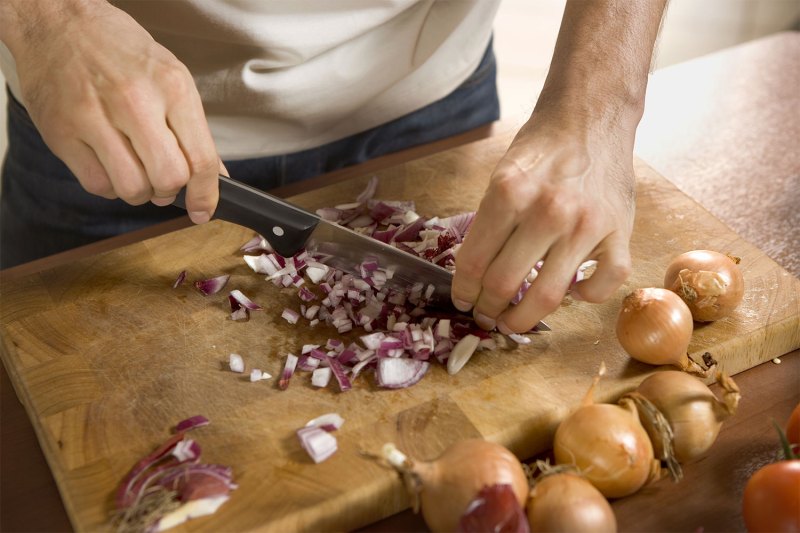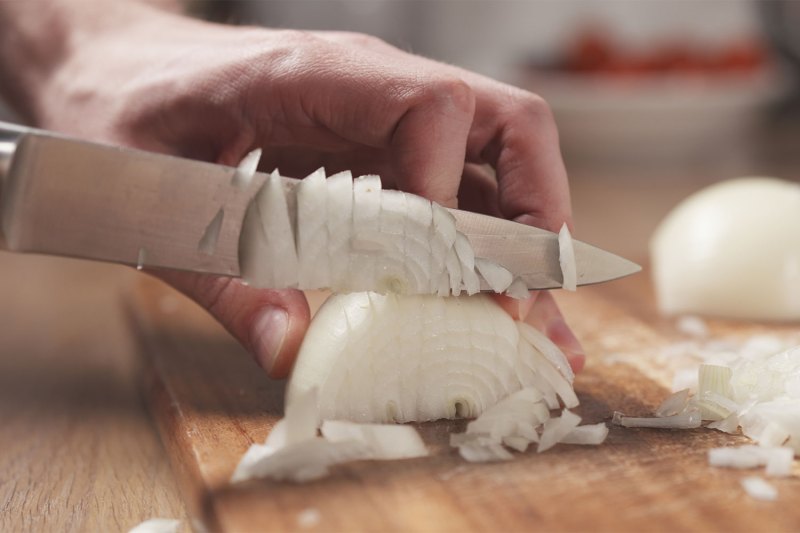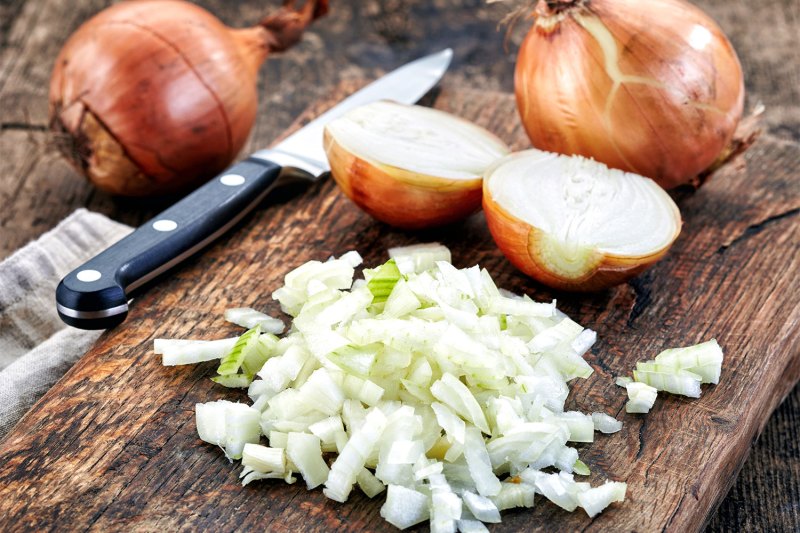The proper way to chop an onion counts among the very first lessons that any aspiring chef learns in culinary school, and it’s easy to understand why. Whether you’re a home cook or a professional chef, if you want to make flavorful food, then you’re gonna have to figure out how to work with onions. That said, these pungent alliums are notoriously tricky to cut efficiently, due to their numerous layers, their slippery texture, and — of course — their knack for making tears well up in the eyes of those who dare to cross them.

Happily, we spoke to a group of professional chefs to get their advice on how to chop an onion as quickly and painlessly as possible, and they shared the following must-try suggestions.
Use this foolproof chopping method:
When it comes time to chop onions, chef and founder Daniel Brassloff of Freed Pizza in Boston still uses a technique that he learned while attending culinary school in Barcelona. He describes the step-by-step process as follows:
- Cut the whole onion in half, cutting through the root and bulb, and peel [off] the outer layer.
- Next, cut the bulb’s top off and a small amount of the root (leaving some of the thicker part connecting it to the onion).
- After that, put each piece flat [on your preferred cutting board], then cut narrow strips on both slices (going all the way down but avoiding cutting near where the root was). Then, cut horizontally from the bulb end to the root end, again avoiding cutting near where the root was.
- Lastly, chop across the bulb area slowly [to remove the rest of the root] and discard that section.”
Remember these tips to achieve a perfect, tear-free chop:
Be sure to use a very sharp knife.
“The best and easiest way to not tear up while you are cutting an onion is to always make sure you have a very sharp and reliable knife,” insists chef/owner Jacob Bickelhaupt of Stone Flower Restaurant in Chicago. He goes on to say that “dull knives crush the onion and release more of the knee-dropping, eye-tearing enzymes that make you look like your favorite team just lost the Super Bowl.” So do yourself a favor and give your knife a few passes through a sharpener before taking on an onion.

Pop the onion in the freezer for 30 minutes before cutting.
Several of our experts informed us that a cold onion is less likely to inspire eye stinging and tears than a room-temperature version. With that in mind, nutritionist and educator Carmen Berry of Operation Food Search urges you to “place the onion in the freezer for up to 30 minutes before chopping it. [This] helps to prevent any onion tears!”
Keep your fingers curled as you chop.
Worried about nicking your finger if your knife slips mid-onion chop? Follow the advice of Frank Proto, the director of culinary operations at the Institute of Culinary Education in NYC and “make sure you curl your fingers under [as you chop] so they don’t get cut.”
Breathe through your mouth, not through your nose.
Cooking with a stuffy nose isn’t typically a desirable state of affairs, but chef/owner Dimitri Voutsinas of Otaku Katsu in NYC does recall one benefit of chopping onions with nasal congestion: “I found this onion-cutting trick out by accident. I had allergies and, hence, a stuffy nose. I started cutting the onion and I didn’t cry. So the next time I cut onions, I only took breaths through my mouth, making sure not to breathe through my nose at all…[and] IT WORKED! Zero tears.”

Chew some mint-flavored gum while chopping.
If you’d rather not alter your breathing patterns while chopping onions, consider this simple hack from chef/owner Nik Fields of Chic Chef Co. in Phoenix, Arizona: “Chew your favorite mint-flavored gum while cutting an onion that’s been chilled first. I know this sounds weird, but it really works.”
Discard onion skins and root ends as soon as possible.
After you remove the onion skins and chop off the root ends, you may not feel a major push to toss these materials out right away, especially if you have a big cutting board with room to spare. However, if your goal is a tear-free experience, then do what corporate executive chef Katy Velazquez of QDOBA does and, as soon as the onions are chopped, “place the skins and root ends in the compost bin or trash [once they’re removed], transfer the onions to a bowl or pan, and give your cutting board a rinse so that the raw onion fumes dissipate.”



